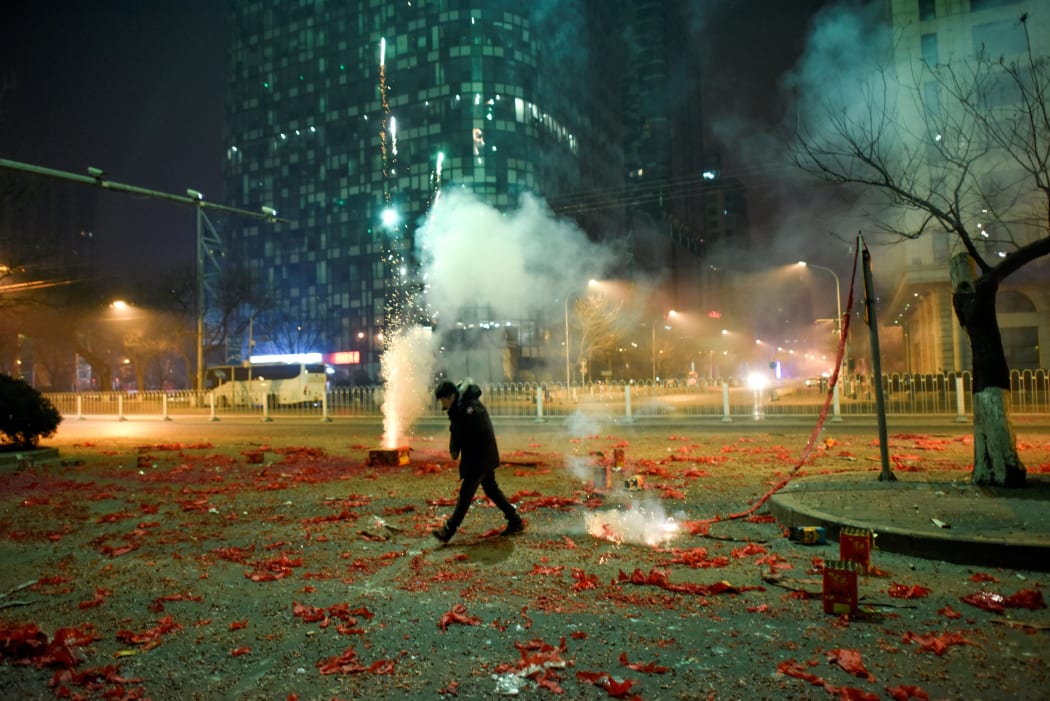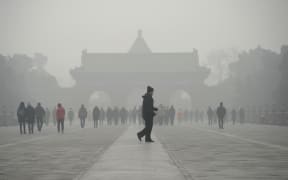Residents of China's capital awoke today to dense, choking smog after a barrage of fireworks overnight to ring in the Lunar New Year, despite limits and public admonitions against such displays in the congested city.
State media reported the Beijing Municipal Environmental Protection Bureau as saying air pollution had hit the second-highest level in five years.

Empty firework papers litter the streets of Beijing on Saturday, just after midnight marking the start of China's Lunar New Year. Photo: AFP
Beijing started a "war against pollution" in 2014 as part of a central government promise to reverse damage done by decades of breakneck growth and strengthen powers to shut down and punish polluters. Efforts to clean up the skies in the industrial heartland around the city are being thwarted by coal-burning industry and indoor heating, which increases during China's winter months.
Public health concerns over air pollution have grown and the government has found no source of pollution too small to ignore. They have even taken on outdoor food vendors in recent years, as well as the annual battle against China's long tradition of lighting fireworks to celebrate the Lunar New Year - also known as the Spring Festival.
Hundreds of millions of people criss-cross China to visit family and friends during the holiday period, with the government predicting up to three billion trips.
In Beijing, efforts to ease smog included neighbourhood postings asking residents not to light fireworks, fewer approvals for firework stalls and officials being warned to lead by example and abstain from the pyrotechnics.
"In setting off fireworks, be conscious of 'setting off the [pollution] index'," read an editorial in Communist Party newspaper People's Daily.
State-owned news agency Xinhua reported that purchases of fireworks fell 4.9 percent in Beijing this year, but the measures were not enough to avoid a spike in pollution from healthy to hazardous levels in a matter of hours.
Beijing's level of PM2.5, a measure of small particulate matter particularly damaging to health, peaked at 647 micrograms per cubic metre early on Saturday, the national ministry of environmental protection said in a statement on its website.
That was well beyond the upper limit of 500 on China's air quality index and double the threshold considered hazardous.
The greater region of Beijing, the nearby port city of Tianjin and surrounding Hebei province all surpassed peak levels of PM2.5 in 2016, it said.
Many on the streets of the capital wore masks to welcome the Year of the Rooster, including paramilitary police stationed at the Lama Temple and spectators at outdoor performances.
Dispersal of the pollution largely depends on weather conditions, with two cold air fronts likely to help reduce pollution in the Beijing-Tianjin-Hebei Region through to Wednesday, the environmental ministry said, before conditions deteriorate again and potentially lead to another heavy bout of pollution.
Meanwhile, outside China, celebrations are being held around the world for the Lunar New Year, including in New Zealand and Australia.
A lantern festival will be held from 9-12 February at the Auckland Domain and Wellington's Chinese New Year Festival will run from 11-14 February.
In Sydney, the foreshore will be lined by 12 zodiac lanterns and the Opera House's sails and the Harbour Bridge will be bathed in red light. More than one million people are expected to attend the festival over the next two weeks, which is one of the largest celebrations of the event outside of Asia.
- Reuters / RNZ / ABC




